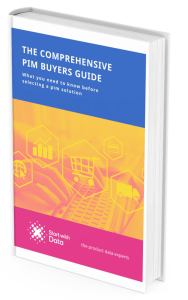- PIM
- With the introduction of its latest ecommerce platform, Trinity Packaging Supply, a 13-year-old company with annual revenue of $100 million,
- B2B eCommerce Association
- -

If you want to join the B2B eCommerce Association for free, click here.
With the projected growth of digital transactions in B2B commerce, it has become crucial for businesses to prioritize digital payment solutions. In this comprehensive guide, we will explore B2B eCommerce payment processing and the various methods, trends, and solutions in B2B payments.
B2B payments, or business-to-business payments, involve transactions between two businesses where one pays the other for goods or services. These payments can be made through diverse methods such as wire transfers, credit cards, and online payment platforms. Implementing an efficient B2B payment system in eCommerce is crucial for streamlining financial processes, improving cash flow, and enhancing business relationships.
In B2C retail, payment processing is straightforward, as customers typically pay during checkout. They are accustomed to using credit cards and various payment gateways like PayPal, Apple Pay, and Amazon Pay. Some progressive sellers have even started accepting cryptocurrencies, although fraud risks remain significant.
In contrast, B2B payment methods involve buyers paying with negotiated terms, such as net 30 or net 60, often with discounts for early payment. B2B customers value building long-term relationships and expect credit checks during the initial stages. While fraud concerns persist in B2B ecommerce, they are not as prevalent as in B2C, accounting for a smaller portion of total sales volume.
Traditional B2B Payment Options
To cater to buyer convenience, B2B payment options must be flexible, accommodating multiple invoices, industry-specific compliance, and negotiated prices and terms. Here are the most common traditional payment options:
Paper check
Despite its age, checks still dominate B2B payments, with 51% of transactions relying on this method. However, paper checks are prone to errors, have a lengthy processing cycle, and incur costs ranging from $4 to $20 per check.
ACH (Automated Clearing House)
A digital version of checks, ACH transfers account for 69% of B2B e-payments. Buyers appreciate the convenience, while sellers benefit from faster access to funds and lower processing costs compared to paper checks.
Wire transfer
Suitable for large transactions, wire transfers offer a secure and practical method for transferring funds between company bank accounts. However, they come with higher bank charges compared to other options.
Credit/debit card
Millennial buyers are more open to using credit cards for B2B transactions, providing flexibility in payment terms. However, the average invoice value inversely affects the likelihood of settling via credit card.
Nontraditional B2B ecommerce payment methods
Apart from traditional options, B2B eCommerce payment trends indicate a rise in nontraditional methods. Many of these methods have transitioned successfully from B2C to B2B eCommerce. Notable examples include:
PayPal
With wide acceptance among retailers, PayPal is a popular choice for B2B payments due to its exceptional fraud protection and guaranteed payments when complying with shipping rules.
AmazonPay
Leveraging Amazon’s payment infrastructure, AmazonPay simplifies payables processing for businesses with substantial volume on Amazon. It offers an efficient method for internal control and familiar payment experiences for employees.
Cryptocurrency
Digital currencies like Bitcoin, Ethereum, and LiteCoin, collectively known as cryptocurrency, offer secure B2B payment options, although they carry their own set of risks as they are not backed by governments or banks.



Accelerate your time-to-market for products while staying in sync with evolving assortments and customer demands. Utilize a PIM tool to provide engaging product experiences that enhance buyer loyalty.

Grow business and market share by expanding your product catalog and targeting more markets. Boost conversions, decrease returns, and cut costs by maximizing team productivity.

Leverage cloud-native PIM technology to manage scalability and minimize infrastructure expenses. Empower your marketing team with the essential tools they need to succeed.
To meet the expectations of modern B2B buyers and maximize sales conversions, businesses must provide a range of online payment options. Offering diverse payment methods not only enhances customer experience but also improves cash flow and reduces collection efforts. Manual payment processes often result in late payments, impacting cash flow negatively. By adopting B2B payment software, businesses can streamline transactions, minimize errors, and access invoice financing and credit risk processing in real-time.
Blockchain
This technology has the potential to revolutionize B2B eCommerce payments by providing enhanced security, efficiency, and transparency. Blockchain enables faster processing, reduces transaction costs, and automates payment processes through smart contracts.
Automation
Leveraging technologies like robotic process automation (RPA) and artificial intelligence (AI), businesses can achieve efficiency, accuracy, and control in B2B digital payments. Automation allows for recurring payments, advanced scheduling, and automatic reconciliation, saving time, reducing errors, and minimizing fraud risks.
Buy Now Pay Later (BNPL)
Initially popular in B2C eCommerce, BNPL is making its way into the B2B space. It enables businesses to make purchases on credit and pay in installments, effectively managing cash flow and improving customer loyalty.
Handling multiple payment options, including checks
Online payment services should accommodate different payment methods such as credit cards, ACH, and corporate or purchasing cards. They should also support traditional methods like paper checks to meet industry-specific preferences.
Credit lines and discounts
B2B customers expect credit options and volume-level pricing. Effective payment services should save order information, send invoices as needed, track payments, apply discounts retroactively, and automate customer credit checks.
Purchasing approval
Multi-stage approval processes can delay payments and lead to cart abandonment. An efficient payment system should securely track orders and allow customers to send them across departments for approval, ensuring a smooth payment process.
Security
Data security is vital in B2B eCommerce payments to protect sensitive information. Payment systems should employ tokenization, encrypting and replacing payment data with tokens, to enhance security and facilitate one-click ordering for customers.

Informatica is a leading provider of product information management (PIM) software solutions. Their comprehensive platform empowers businesses to efficiently manage and optimize product data across multiple channels. Informatica enables organizations to create, enrich, and syndicate product information, ensuring accuracy and consistency throughout the customer journey.
With a comprehensive suite of features, Stibo’s PIM software allows organizations to centrally manage and enrich product information, ensuring consistency, accuracy, and completeness across channels. The platform facilitates collaboration among teams, suppliers, and partners, enabling seamless data exchange and efficient workflows. Stibo’s PIM software also offers advanced data governance capabilities, ensuring compliance and data integrity.
Implementing a robust Product Information Management (PIM) system involves considering several factors that influence its costs. These include the type of solution (on-premises or cloud-based), scalability, customization and configuration needs, integration with existing systems, implementation and training, as well as ongoing maintenance and support. By carefully evaluating these factors, organizations can make informed decisions about the most suitable PIM solution and associated expenses.
When building a business case for acquiring a Product Information Management (PIM) software solution, there are several key requirements to consider. These requirements will help you outline the benefits, costs, and risks associated with implementing a PIM solution, and justify the investment to stakeholders. Here are the key components to include in your business case.
Identify the business goals: Clearly define the business goals and objectives that the PIM solution will help achieve. This could include improving data accuracy, enhancing product information consistency, streamlining product launches, reducing time-to-market, improving customer experience, or expanding into new sales channels.
Assess current challenges: Identify the existing pain points and challenges in managing product information. This could include issues like data inconsistency, manual data entry, poor data quality, inefficient workflows, difficulty in scaling, or limited integration capabilities. Highlight how these challenges are impacting business operations and hindering growth.
Quantify the benefits: Outline the specific benefits that a PIM solution can bring to your organization. These benefits could include increased operational efficiency, improved data quality and accuracy, faster time-to-market, reduced product return rates, enhanced customer experience, increased cross-selling opportunities, or improved compliance with regulations.
Determine the scope: Define the scope of the PIM solution implementation. Identify the number of products, SKUs, and channels that will be covered, as well as any specific requirements related to your industry or target market. This will help estimate the scale and complexity of the implementation.
Evaluate costs: Estimate the costs associated with acquiring, implementing, and maintaining the PIM solution. Consider expenses such as software licenses, implementation services, data migration, training, ongoing support, and infrastructure requirements. Also, factor in any potential savings from eliminating manual processes or reducing data errors.
ROI analysis: Conduct a Return on Investment (ROI) analysis to demonstrate the financial impact of implementing the PIM solution. Compare the projected cost savings, revenue growth, and other financial benefits against the initial investment. Consider the payback period, net present value (NPV), and internal rate of return (IRR) to evaluate the financial viability.
Risk assessment: Identify and assess potential risks associated with implementing a PIM solution. This could include technical challenges, data migration issues, user adoption barriers, integration complexities, or potential disruptions to business operations. Develop a risk mitigation plan and outline how these risks will be addressed.
Stakeholder alignment: Highlight the support and alignment of key stakeholders, including executives, IT, marketing, sales, and operations teams. Explain how the PIM solution aligns with the organization’s strategic objectives and gain buy-in from stakeholders who will be involved in the implementation.
Implementation roadmap: Develop a high-level implementation roadmap that outlines the key milestones, timelines, and resources required for successful implementation. This will help demonstrate a clear plan for execution and manage expectations.
Alternative options: Evaluate alternative options to a PIM solution, such as maintaining the status quo, using manual processes, or adopting other technology solutions. Compare the pros and cons of each alternative and explain why the PIM solution is the most suitable choice.
Become a member of the B2B eCommerce Association for free today. Connect, learn and find new opportunities.

Become a member of the B2B eCommerce Association for free today. Connect, learn and find new opportunities.
The leading network and resource B2B eCommerce industry professionals and partners.
Join our rapidly growing industry and global network of B2B professionals who want to suceed in ecommerce
Copyright 2024